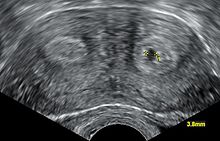Uterine Anomalies and Endometriosis

Endometriosis affects nearly 176 million women worldwide. Up to 30-50% of women with endometriosis suffer from some degree of infertility. Anatomical distortions of the uterus (uterine anomalies) can also affect fertility and pregnancy outcomes. In fact, research has commonly reported the association of endometriosis and uterine anomalies and doctors think that uterine anomalies contribute to the development of endometriosis itself.
What are uterine anomalies?
Congenital uterine anomalies (CUA) or Mullerian anomalies are malformations in the uterus or other parts of the female reproductive tract, which include the cervix, vagina, fallopian tubes, and ovaries. They typically occur in utero (as a fetus) and affect an estimated 3-5% of the general female population. These anomalies can affect pregnancy and lead to infertility.
What kind of anomalies can there be in the uterus?
Common forms of uterine anomalies include arcuate, septate, bicornuate, and unicornuate uterus. Please visit our dedicated resource page, which contains more information about these.
How do we diagnose CUA?
When we suspect a uterine anomaly on physical examination or medical history, a pelvic ultrasound is usually the first step for diagnosis. We sometimes use saline water to outline the uterine cavity and enhance the 2D ultrasound. If the initial imaging is inconclusive, traditionally magnetic resonance imaging (MRI) has been the gold standard for noninvasive diagnosis.

Finally, we can provide a diagnosis and potential surgical correction via operative routes such as hysteroscopy, laparoscopy, or vaginoscopy. In hysteroscopy, we use a camera to look inside the uterine cavity; at the same time, we can remove uterine problems such as septums, adhesions, polyps, and fibroids.
Can uterine anomalies cause endometriosis?
One of the theories of the origin of endometriosis is Sampson’s theory of retrograde menstruation. This theory notes that the blood and tissue that is normally expelled during a women’s period also travels back down the fallopian tubes and into the abdominal cavity, where it implants into areas outside the uterus.
We know that uterine anomalies are more common in women with endometriosis. Some anomalies decrease or entirely block the outflow of menstrual blood, while others may affect the ability of the uterus to contract properly; both likely lead to increased retrograde menstruation and endometriosis formation.
How we treat endometriosis in women with uterine anomalies
We use multiple approaches for the treatment of women with uterine anomalies. Typically, we perform hysteroscopy (looking inside the uterus) and laparoscopy (outside the uterus), but the exact procedures are tailor-made depending on your treatment goals and specific anomaly.
Because uterine anomalies are complex and can have many implications on pain and current or future fertility, it is important to seek a specialist. The surgeons at Seckin Endometriosis Center (SEC) are highly experienced and can provide a comprehensive treatment plan.
Do you have a uterine anomaly? Please leave a comment on our post on Facebook or Instagram if you wish to share your experience.
Get a Second Opinion
Our endometriosis specialists are dedicated to providing patients with expert care. Whether you have been diagnosed or are looking to find a doctor, they are ready to help.Our office is located on 872 Fifth Avenue New York, NY 10065.
You may call us at (646) 960-3080 or have your case reviewed by clicking here.